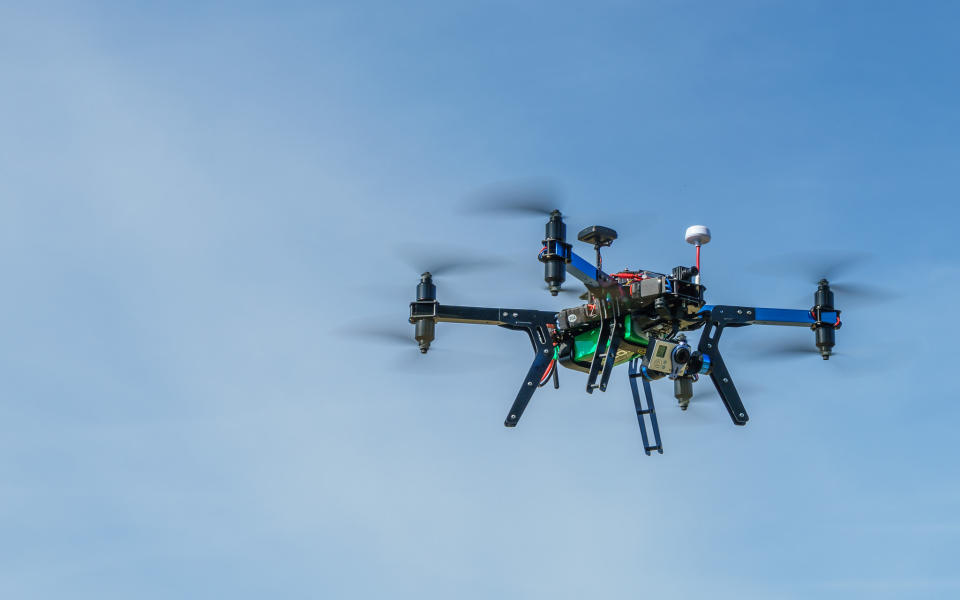The Future of Mobile Advertising Isn't What You Think

Today, mobile advertising refers to advertising on mobile devices like smartphones, tablets, and smartwatches. But more and more our advertising is on the move. The "mobile" advertising of the future will be will actually be mobile—it will move! Drones and self-driving cars are two of the most prominent emerging technologies today, and each presents an exciting opportunity for advertising.
The Potential for Drone Advertising
Aerial advertising by way of airplane banners been around for years. With drones, this method gains a new and more versatile avenue. Companies like Dronecast and Hoovy are already beginning to make some noise in the drone advertising market, but the future holds a lot more exciting prospects than what is currently available.
For drone advertising to be truly successful, it must be targeted and it must incorporate data. For example, if you wanted to use a drone to advertise a real estate property, you would send your drone to the places where potential homebuyers spend their time. The best way to figure out the placement of your drone, the timing of the advertisement, the volume of advertisements, and the frequency of the advertisement would be to use data. Social media can already give you a lot of the information you need to target these ads, and its usefulness will likely grow.
Also, if drone advertising were to become more popular method, then pricing for banner rentals would likely fluctuate based on data. For example, advertising in front of the Javitz Center for New York Comic Con in October would cost more than advertising in the same place on a different, less popular day. Distributors should automate their pricing models according to this data in order to gain the most benefit out of their resources.
Finally, if drone advertising is to distinguish itself from every other form of brand awareness banner advertising, it has to be engaging. How could a drone be engaging? Well for one, it's simple to involve social media in drone advertising. Brands can create campaigns around drones and offer coupons to whomever broadcasts a photo of the drone. But, if we scrap the idea that drone advertising exclusively must involve banners, then we can imagine drones that engage with consumers beyond a simple impression. For example, a drone with an on board A/V system could offer consumers directions to a venue, suggestions, or even take branded selfies with whomever interacts with the flying robot.
In Car Advertising
Advertisers have already begun exploring ways to reach consumers while they're in their cars. One of the most successful examples involves Waze advertisements. As you travel with Waze, ads pop up on your route for gas stations, restaurants, rest stops, and whatever else you might need.

One lesser known example of in-car advertising is piggy backing on the success of on-demand ride-sharing services like Uber and Lyft. Vugo claims to create ride-sharing ads for everyone, and highlights the fact that their ads are relevant.
The wave of self-driving cars that is coming towards us is exciting for advertisers for a few reasons. Because of self driving cars, we won't have to pay as much attention to the road and can therefore focus more attention on in-car systems. We can imagine an in car system that talks to you and makes suggestions on your route. And we can also imagine the system being responsive and interactive.
For example the car might say, "you're running low on fuel, why don't you stop at this upcoming gas station?" And the driver might respond, "is there also a pizza restaurant nearby? I'm hungry too." This back and forth also shows how the system might incorporate data like fuel levels, but with AI and machine learning, the aspect of personalization via data is even more exciting.
Imagine a car that knows where you want to go before you set a route, just by your past actions. Or one that can anticipate a trip to the hardware store to pick up a lawnmower because it's been communicating with your IoT lawnmower, which is now broken. Imagine, too, that your car has been involved in a secret romance with this lawnmower and now that the mower is broken, the car's "heart" is broken. Ok, maybe don't imagine that last one.
The future will be an exciting time for advertising on the move. But the more important question is this: will advertisers finally learn how not to be annoying?
